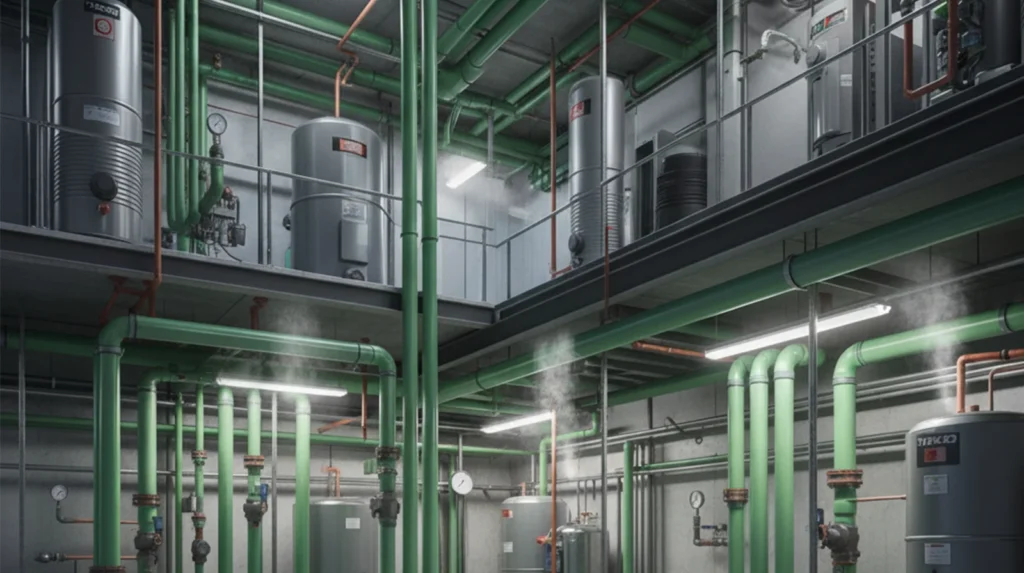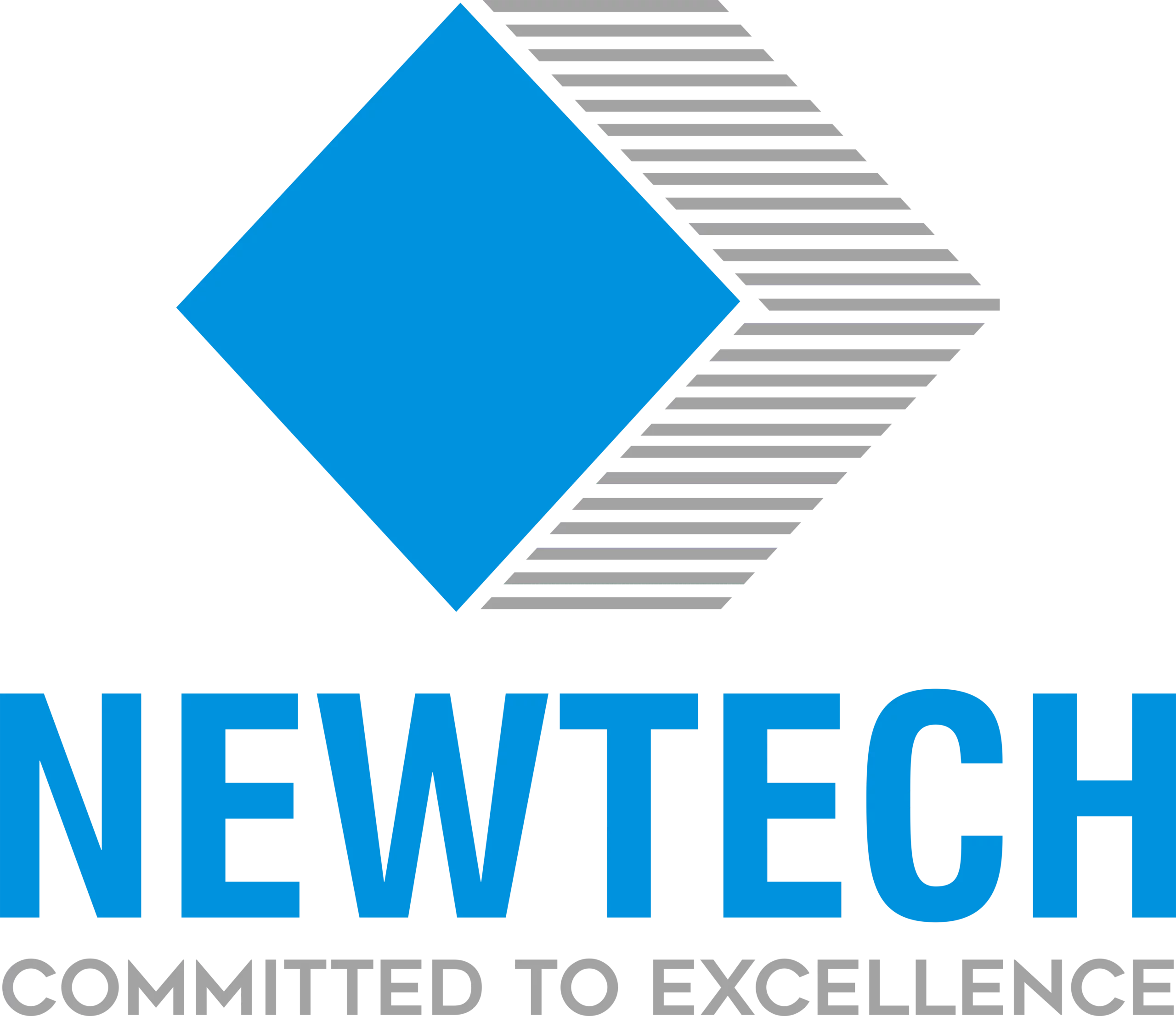Have you ever faced the frustration of leaky pipes or a system that doesn’t hold up under high temperatures? As business owners and homeowners alike seek reliable solutions for plumbing, PPRC pipes have become the go-to option for hot water systems. With a wide range of advantages, from durability to cost-effectiveness, PPRC (Polypropylene Random Copolymer) pipes have earned their place in modern plumbing systems, especially when it comes to transporting hot water.
The Problem: Hot Water Systems Need More Than Just Standard Pipes
If you’ve dealt with traditional pipes in hot water systems, you know the risks: corrosion, wear, and frequent repairs. In extreme cases, pipes can fail completely, leading to costly damage and downtime. Standard pipes just don’t have the resilience needed for consistently high temperatures.
The Solution: PPRC Pipes – A Game Changer for Hot Water Systems
Enter PPRC pipes—designed specifically to withstand high-temperature environments. They offer a cost-effective, long-lasting solution to these common issues. In this article, we’ll explore why PPRC pipes are the top choice for hot water systems, addressing everything from material benefits to installation considerations. By the end of this post, you’ll understand why PPRC pipes should be your go-to solution for plumbing needs.
Why PPRC Pipes are Perfect for Hot Water Systems
What Makes PPRC Pipes Stand Out?
PPRC pipes are engineered with random copolymer polypropylene, making them resistant to both high temperatures and pressure. These pipes are specifically designed for hot water systems and offer superior performance compared to other materials like PVC or metal pipes. Some of the key characteristics of PPRC pipes include:
Heat Resistance: PPRC pipes can handle temperatures up to 95°C without degrading, making them ideal for hot water transportation.
Chemical Resistance: Unlike metal pipes, PPRC pipes do not corrode when exposed to water or certain chemicals.
Durability: They offer a long lifespan of up to 50 years, significantly reducing the need for maintenance or replacements.
Ease of Installation: PPRC pipes can be welded or joined using heat fusion, providing a secure and leak-free connection.
Pro Tip: PPRC pipes are not just limited to hot water systems. They’re also suitable for both cold water systems and underfloor heating, making them versatile across various applications.
How PPRC Pipes Compare to Other Materials for Hot Water Systems
PPRC vs. PVC: Which is Better for Hot Water?
When comparing PPRC pipes to PVC pipes, the main differentiator is heat resistance. While PVC is cheaper, it cannot handle high temperatures as effectively as PPRC, which makes PVC unsuitable for hot water systems.
| Property | PPRC Pipes | PVC Pipes |
|---|---|---|
| Temperature Resistance | Up to 95°C | Up to 60°C |
| Durability | 50+ years | 25 years |
| Installation | Fusion welded | Solvent-cement joints |
| Chemical Resistance | High | Moderate |
Pro Tip: Always check the temperature ratings of the pipes before selecting one for hot water systems. While PVC is affordable, it’s not worth the risk of failure in high-temperature environments.
PPRC vs. Metal Pipes: Is PPRC Really Better?
When compared to metal pipes like copper or steel, PPRC pipes offer several advantages, especially in hot water systems:
Corrosion Resistance: Metal pipes corrode over time when exposed to water and heat, whereas PPRC pipes are immune to corrosion.
Weight: PPRC pipes are significantly lighter than metal pipes, which makes them easier and cheaper to transport and install.
Cost: While metal pipes tend to be more expensive, PPRC pipes offer a similar lifespan at a fraction of the cost.
Pro Tip: PPRC pipes are particularly beneficial in areas with high water salinity, as they won’t corrode like metal pipes, leading to reduced maintenance costs.
The Benefits of PPRC Pipes for Hot Water Systems
1. Exceptional Heat Resistance
One of the primary reasons PPRC pipes are the top choice for hot water systems is their heat resistance. These pipes are able to handle constant high temperatures (up to 95°C) without warping or losing structural integrity. This makes them ideal for carrying hot water in domestic, industrial, and commercial systems.
2. Cost-Effectiveness
While the initial cost of PPRC pipes may be higher than some alternatives, their long lifespan and low maintenance costs make them an economical choice over time. They don’t need frequent replacements or repairs, which can add up quickly with other materials.
3. Improved Safety and Reliability
PPRC pipes use heat fusion technology to join pipes, ensuring secure, leak-proof joints that are both safe and reliable. This technology eliminates the need for toxic adhesives, which can be used in PVC pipe systems. Additionally, the smooth inner surface of PPRC pipes prevents scale buildup and blockages, ensuring consistent water flow.
Expert Insight: Many commercial and industrial facilities, such as hotels and factories, have opted for PPRC pipes because of their long-lasting durability and efficient performance, significantly reducing operational downtime.
Case Study: Residential Hot Water Systems Using PPRC Pipes
A major residential building complex in Lahore switched to PPRC pipes for their hot water system, resulting in a significant reduction in pipe maintenance costs. Before the switch, traditional metal pipes frequently developed leaks and corrosion, costing the building owners hefty repair bills. After installing PPRC pipes, the residents saw improved water quality and system efficiency, all while lowering their maintenance expenses.
Pro Tip: If you’re in the process of designing a new hot water system, consider using PPRC pipes from the outset for maximum long-term benefits.
Installation Process: How Easy is it to Install PPRC Pipes?
The installation of PPRC pipes for hot water systems is straightforward and often faster than traditional metal pipes. The pipes are joined using a process called butt fusion welding, where the ends of the pipes are heated and then fused together. This method creates a seamless, leak-proof joint that’s highly durable and long-lasting.
Key Steps in Installation:
Cutting: The pipe is cut to the required length using a pipe cutter.
Heating: The ends of the pipe are heated to a specific temperature using a welding tool.
Fusing: The heated ends are joined together, forming a strong bond.
Cooling: The fused joint is allowed to cool and set, ensuring a secure connection.
This installation method not only ensures reliability but also speeds up the construction process, reducing overall labor costs.
Conclusion
PPRC pipes are undoubtedly the best choice for hot water systems. Their exceptional heat resistance, durability, and cost-effectiveness make them the ideal material for a variety of applications. Whether you’re a business owner looking to install a new hot water system or a homeowner considering a plumbing upgrade, PPRC pipes offer a reliable, long-term solution.
Next Steps:
If you’re planning your next hot water installation, take a closer look at PPRC pipes. Consider getting in touch with a professional installer who can guide you through the process and ensure that you get the best performance from your piping system.
FAQ Section
1. What is the maximum temperature PPRC pipes can handle?
PPRC pipes can handle temperatures up to 95°C, making them suitable for most hot water systems.
2. Are PPRC pipes suitable for both hot and cold water?
Yes, PPRC pipes are versatile and can be used for both hot and cold water applications.
3. How long do PPRC pipes last?
PPRC pipes typically have a lifespan of 50 years or more, provided they are properly maintained.
4. Can PPRC pipes be installed in high-pressure systems?
Yes, PPRC pipes can handle high-pressure applications and are often used in both residential and industrial settings.
5. Are PPRC pipes eco-friendly?
Yes, PPRC pipes are made from recyclable materials, making them a more eco-friendly option compared to some other types of piping.
6. How do PPRC pipes compare to copper pipes for hot water systems?
PPRC pipes are more cost-effective and corrosion-resistant compared to copper pipes, which can be prone to corrosion and scaling over time.
7. What is the cost difference between PPRC pipes and metal pipes?
While PPRC pipes have a higher initial cost, they are more affordable in the long run due to their durability and reduced maintenance needs.


